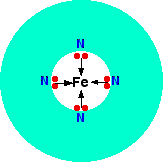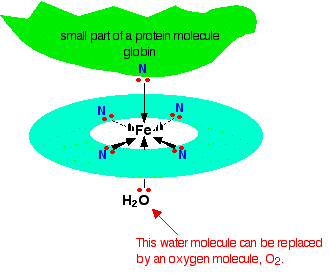

علم الكيمياء

تاريخ الكيمياء والعلماء المشاهير

التحاضير والتجارب الكيميائية

المخاطر والوقاية في الكيمياء

اخرى

مقالات متنوعة في علم الكيمياء

كيمياء عامة


الكيمياء التحليلية

مواضيع عامة في الكيمياء التحليلية

التحليل النوعي والكمي

التحليل الآلي (الطيفي)

طرق الفصل والتنقية


الكيمياء الحياتية

مواضيع عامة في الكيمياء الحياتية

الكاربوهيدرات

الاحماض الامينية والبروتينات

الانزيمات

الدهون

الاحماض النووية

الفيتامينات والمرافقات الانزيمية

الهرمونات


الكيمياء العضوية

مواضيع عامة في الكيمياء العضوية

الهايدروكاربونات

المركبات الوسطية وميكانيكيات التفاعلات العضوية

التشخيص العضوي

تجارب وتفاعلات في الكيمياء العضوية


الكيمياء الفيزيائية

مواضيع عامة في الكيمياء الفيزيائية

الكيمياء الحرارية

حركية التفاعلات الكيميائية

الكيمياء الكهربائية


الكيمياء اللاعضوية

مواضيع عامة في الكيمياء اللاعضوية

الجدول الدوري وخواص العناصر

نظريات التآصر الكيميائي

كيمياء العناصر الانتقالية ومركباتها المعقدة


مواضيع اخرى في الكيمياء

كيمياء النانو

الكيمياء السريرية

الكيمياء الطبية والدوائية

كيمياء الاغذية والنواتج الطبيعية

الكيمياء الجنائية


الكيمياء الصناعية

البترو كيمياويات

الكيمياء الخضراء

كيمياء البيئة

كيمياء البوليمرات

مواضيع عامة في الكيمياء الصناعية

الكيمياء الاشعاعية والنووية
A Quadridentate Ligand
المؤلف:
........
المصدر:
LibreTexts Project
الجزء والصفحة:
............
5-3-2019
1907
A Quadridentate Ligand
A quadridentate ligand has four lone pairs, all of which can bond to the central metal ion. An example of this occurs in haemoglobin (American: hemoglobin). The functional part of this is an iron(II) ion surrounded by a complicated molecule called heme. This is a sort of hollow ring of carbon and hydrogen atoms, at the center of which are 4 nitrogen atoms with lone pairs on them. Heme is one of a group of similar compounds called porphyrins. They all have the same sort of ring system, but with different groups attached to the outside of the ring. You aren't going to need to know the exact structure of the haem at this level.
We could simplify the heme with the trapped iron ion as:

Each of the lone pairs on the nitrogen can form a co-ordinate bond with the iron(II) ion - holding it at the center of the complicated ring of atoms. The iron forms 4 co-ordinate bonds with the haem, but still has space to form two more - one above and one below the plane of the ring. The protein globin attaches to one of these positions using a lone pair on one of the nitrogens in one of its amino acids. The interesting bit is the other position.

Overall, the complex ion has a co-ordination number of 6 because the central metal ion is forming 6 co-ordinate bonds. The water molecule which is bonded to the bottom position in the diagram is easily replaced by an oxygen molecule (again via a lone pair on one of the oxygens in O2) - and this is how oxygen gets carried around the blood by the haemoglobin. When the oxygen gets to where it is needed, it breaks away from the haemoglobin which returns to the lungs to get some more.
 الاكثر قراءة في مواضيع عامة في الكيمياء اللاعضوية
الاكثر قراءة في مواضيع عامة في الكيمياء اللاعضوية
 اخر الاخبار
اخر الاخبار
اخبار العتبة العباسية المقدسة

الآخبار الصحية















 قسم الشؤون الفكرية يصدر كتاباً يوثق تاريخ السدانة في العتبة العباسية المقدسة
قسم الشؤون الفكرية يصدر كتاباً يوثق تاريخ السدانة في العتبة العباسية المقدسة "المهمة".. إصدار قصصي يوثّق القصص الفائزة في مسابقة فتوى الدفاع المقدسة للقصة القصيرة
"المهمة".. إصدار قصصي يوثّق القصص الفائزة في مسابقة فتوى الدفاع المقدسة للقصة القصيرة (نوافذ).. إصدار أدبي يوثق القصص الفائزة في مسابقة الإمام العسكري (عليه السلام)
(نوافذ).. إصدار أدبي يوثق القصص الفائزة في مسابقة الإمام العسكري (عليه السلام)


















